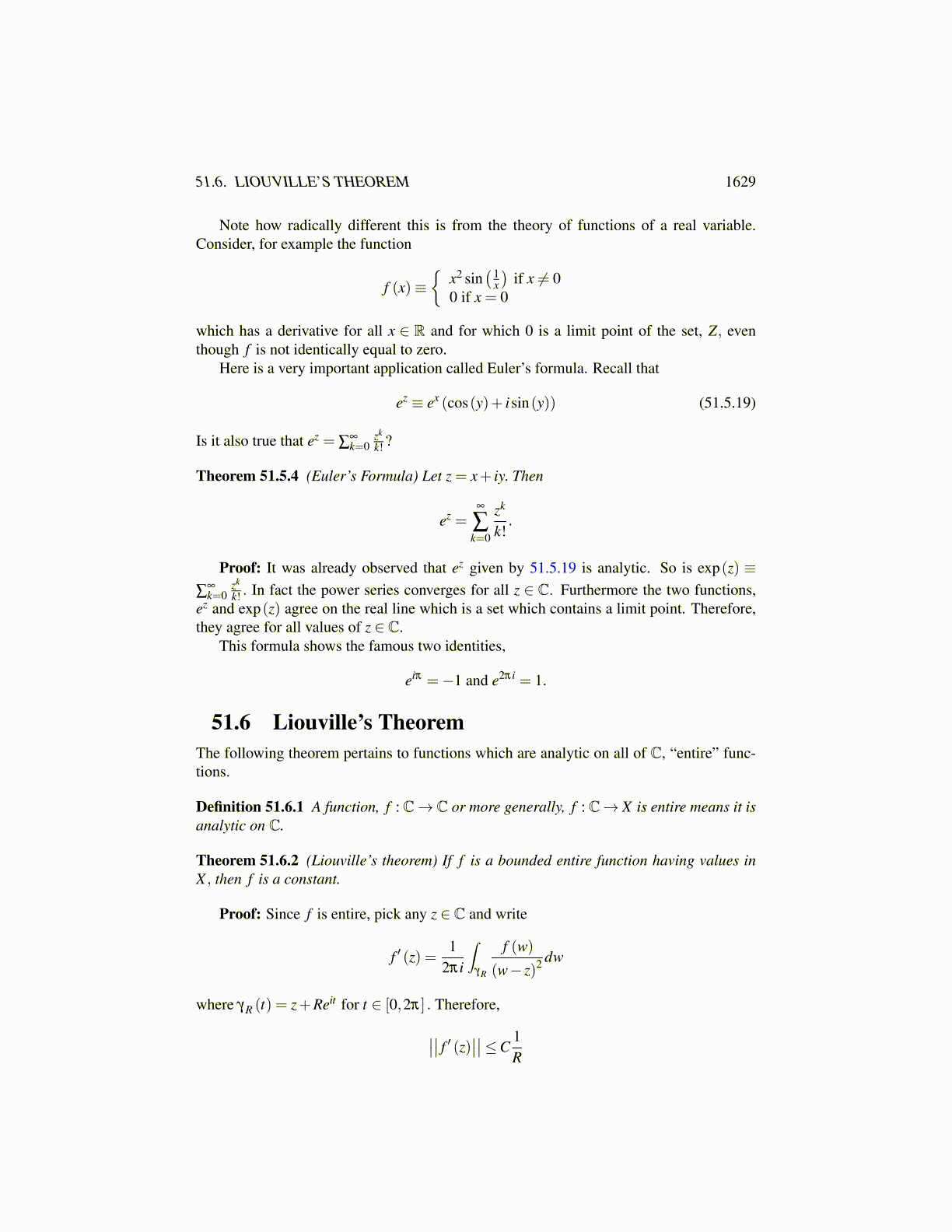
51.5. ZEROS OF AN ANALYTIC FUNCTION 1629
8. Suppose that u(w) is a given real continuous function defined on ∂B(0,R) and definef (z) for |z|< R by 51.4.17. Show that f , so defined is analytic. Explain why u givenin 51.4.18 is harmonic. Show that
limr→R−
u(reiα)= u
(Reiα) .
Thus u is a harmonic function which approaches a given function on the boundaryand is therefore, a solution to the Dirichlet problem.
9. Suppose f (z) = ∑∞k=0 ak (z− z0)
k for all |z− z0|< R. Show that
f ′ (z) =∞
∑k=0
akk (z− z0)k−1
for all |z− z0| < R. Hint: Let fn (z) be a partial sum of f . Show that f ′n convergesuniformly to some function, g on |z− z0| ≤ r for any r < R. Now use the Cauchyintegral formula for a function and its derivative to identify g with f ′.
10. Use Problem 9 to find the exact value of ∑∞k=0 k2
( 13
)k.
11. Prove the binomial formula,
(1+ z)α =∞
∑n=0
(α
n
)zn
where (α
n
)≡ α · · ·(α−n+1)
n!.
Can this be used to give a proof of the binomial formula,
(a+b)n =n
∑k=0
(nk
)an−kbk?
Explain.
12. Suppose f is analytic on B(z0,r) and continuous on B(z0,r) and | f (z)| ≤ M onB(z0,r). Show that then
∣∣∣ f (n) (a)∣∣∣≤ Mn!rn .
51.5 Zeros Of An Analytic FunctionIn this section we give a very surprising property of analytic functions which is in starkcontrast to what takes place for functions of a real variable.
Definition 51.5.1 A region is a connected open set.
It turns out the zeros of an analytic function which is not constant on some regioncannot have a limit point. This is also a good time to define the order of a zero.